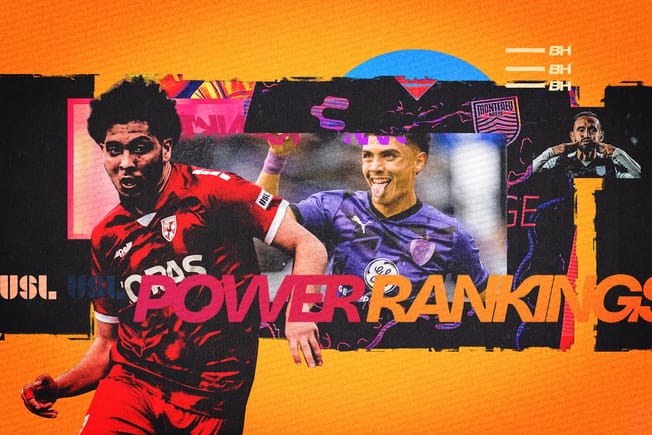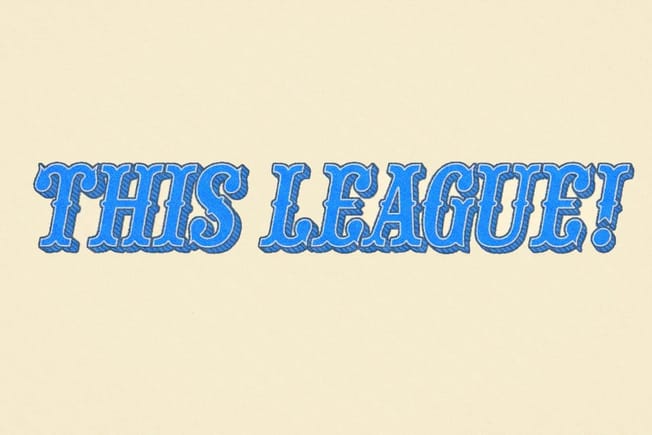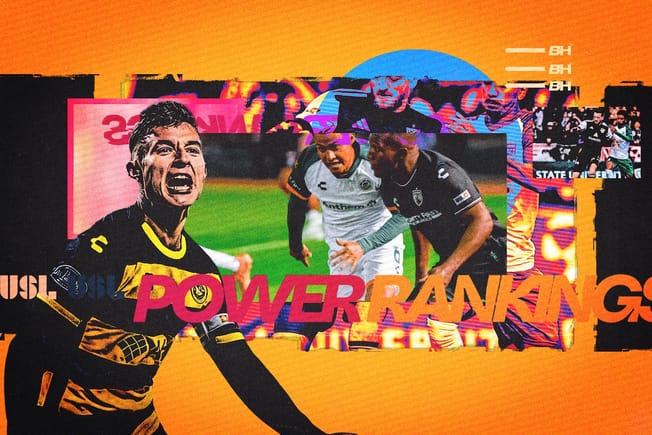Quick Hits
- The USL and the USL Players Association are expected to agree to a collective bargaining agreement later today for the third-division USL League One
- The deal will run through December, 2027 and develops uniform standards across the league for things like compensation, contract length, time off, relocation, and more
The USL and the USL Players Association are expected to agree to a collective bargaining agreement later today for the third-division USL League One.
This deal represents a first for any third-division soccer league in the Americas.
The new CBA will run through December, 2027 and helps League One and its players take several steps forward by developing uniform standards across the league. This deal also comes one year after the USL and its players association ratified a CBA for the USL Championship, a second-division league in the United States.
“It’s a massive thing,” USLPA Acting Executive Director Connor Tobin told Backheeled. “To get into an agreement with where League One is, it’s still a new league. We’re only going to be going into the fifth season this next year. So I think it’s a statement of intent from all parties, not just players, but also the league and then also the team owners of where they want this league to go. It’s putting a marker down in the sand.”
“It’s a huge day for USL and for League One and for our players. We’re thrilled we were able to get through this on both sides,” USL President Jake Edwards told Backheeled. “It’s a sign of the growing confidence in League One, the maturity for League One, and the investment that the clubs and the owners are committing to make into the clubs over the long term. And for the players, it’s a fantastic day also. It starts to really provide consistency of experience for players across all the clubs in the USL.”
Announced in 2017 and launched in 2019, USL League One is currently made up of 11 teams. That number will grow to 12 next year as expansion teams Lexington Sporting Club and One Knoxville make their debuts and FC Tucson moves to USL League Two. Teams based in Spokane, Wash. and Santa Barbara, Calif. are also scheduled to join the league in the future. Edwards told Backheeled earlier this year that League One will “ideally” expand to over 30 teams in the future.
I had the chance to chat with USL President Jake Edwards about a host of topics for @Backheeled.
— Joseph Lowery (@joeclowery) July 25, 2022
I asked him about the USL's growth in the transfer market, expansion, the league's TV deal, and much more. Here are his answers.https://t.co/y4n7ZQ3lE6
MINIMUM COMPENSATION
This new CBA establishes key standards for League One and its players, including a new minimum compensation figure, uniform player contract lengths, and per diem rates.
Players will now receive at least $2,000 per month as the minimum compensation level ahead of next year. That number increases over the life of the CBA and by the final year, 2027, will reach $2,500 per month.
Some of that money may take the form of club-provided housing, but there are some “guardrails” in place to ensure that a set amount of the initial monthly compensation is received by the players as wages. Unlike the Championship, League One’s minimum compensation level applies to every League One player. There are no flex contracts that allow for lower monetary figures.
The new mandatory contract length for USL League One players is 10-months, just like in the USL Championship. That 10-month period is longer than many players have previously experienced in the third-division.
“There were probably more players [in League One] who had report-date contracts and last-game played contracts with variable contract lengths. So that was a big item for our guys,” Tobin told Backheeled.
While these aren’t lofty financial numbers, they do provide additional security for current and future USL League One players.
“For players both domestically and internationally that are coming to USL, [this new CBA] shows a sign in League One of a stable environment,” Edwards said. “They can have confidence in coming into the league knowing that they’re going to have a positive experience.”
STANDARDIZATION IS KEY
Also included in this new CBA are requirements for working conditions and grievance procedures. Those two particular areas were things that League One players felt the need to prioritize in this agreement.
“Large parts of the agreement are similar to the Championship’s. It obviously gave us something to lean on. But I think the League One players are definitely unique, so some of the priority in terms of what matters to them day-to-day was different,” Tobin said, citing working conditions and grievances as two examples.
It’s not just about mechanized procedures, though.
The CBA also provides flexibility for players to take time off during the season for important family events like funerals and the birth of their children. There have been certain instances in the past where players were unable to attend those events during the season, so this new agreement ensures that they will be permitted to travel and attend.
Along with in-season travel and time off, the CBA specifies other practical events like being transferred or traded to a new team. If a player is transferred from one team to another, they no longer have to pay to move all of their belongings to a new city. USL teams will now be responsible for at least a portion of those relocation costs.
In a lower-division soccer landscape that has been marked by teams who approach the business side of the sport in dramatically different ways, the CBA effectively rounds up teams and helps herd them in the same general direction.
FUTURE INVESTMENT, EXPANSION
For USL League One and its clubs, the CBA gives owners more clarity about what the next several years of investments may look like.
“It’s important for the clubs to have a longer lens on their business,” Edwards said. “They can look many years down the road now as they’re thinking about how to grow and invest into their business [and] they have some visibility on what that might look like moving forwards. It’s not drastically changing every year in one way or another.“
That longer lens doesn’t just apply to current League One teams. It applies to prospective expansion teams as well. Edwards called this CBA another sign that makes USL League One “a more attractive investment” for potential new owners thinking of entering League One.
For both parties, USL League One and its players, this new CBA is a chance to help move the sport forward in the United States’ lower divisions. With a set of guidelines in place, this agreement sets necessary thresholds to legitimize USL League One and its various stakeholders.
“There’s a propensity in labor negotiations to think of this as an exercise in dividing the pie, right? It can be very much management versus labor,” Tobin said. “Collective bargaining at its best…should be an exercise in growing the pie. So there’s a lot of things that… are going to incentivize growth in the league and be a collective benefit for everyone.”







Comments